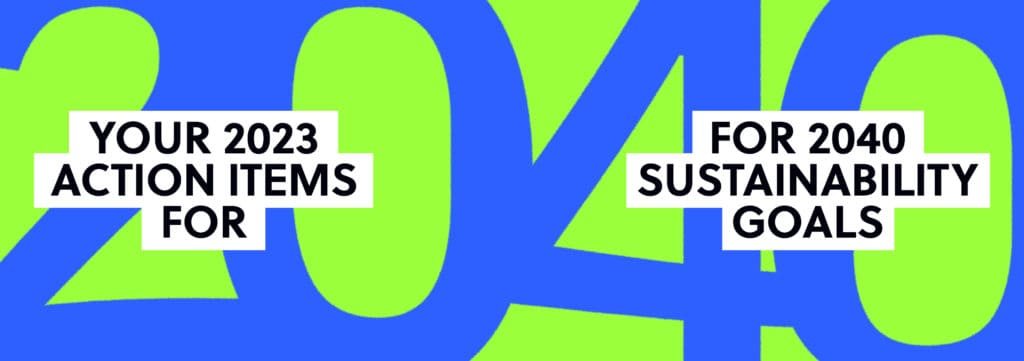How to Implement Carbon Accounting Software Effectively—And Do You Even Need It?


As climate-related disclosure and mitigation requirements continue to evolve, understanding the latest regulatory landscape is essential for US companies. In this webinar, we cut through the jargon to provide clear insights into emerging climate-related requirements, breaking down two key federal proposals and one EU regulation impacting some US-based companies. Join us to stay informed and prepared for what’s ahead in climate compliance.
Carbon accounting software is not right for every business, but here’s how to implement it effectively when it is necessary to use.
The importance of understanding your carbon emissions sources and reducing your overall carbon footprint is a key component of reaching net-zero, with organizations now reporting on their emissions both voluntarily and in response to regulatory drivers. Companies are being held accountable for their greenhouse gas (GHG) emissions and climate impact by stakeholders, including customers and investors. Given the emerging and increasing pressures to quantify carbon emissions, many organizations are seeking opportunities to improve their carbon accounting and better understand their environmental impact. Some organizations are turning to implementing carbon accounting software, also commonly referred to as environmental, health, and safety (EHS) software or environmental, social, and governance (ESG) software, to quantify their emissions and track decarbonization progress, helping them better understand their environmental impact.
While we are focused on carbon accounting software in this post, there are other ways to measure and track your carbon emissions, including spreadsheets and databases—regardless of what method you choose to quantify your emissions, it’s important to do so accurately, traceably, and transparently. It’s hard to address your climate actions and set decarbonization targets until you accurately understand your carbon footprint—what gets measured gets managed.
Jump ahead to these sections to learn about what’s essential in deciding for your company:
- Is Carbon Accounting Software Right for Your Business?
- Choosing the Right Software and Avoiding Pitfalls
- Setting up and Managing Carbon Accounting Software
- What Data Analysis Insights Can Be Gained?
- Effectively Integrating a Carbon Accounting Solution in Your Business
- Conclusion
Carbon accounting software can sometimes be an effective way to assess your carbon footprint when it’s implemented meticulously and has robust Scope 3 methodologies built in, but the use of carbon accounting software does not guarantee an accurate and traceable carbon footprint of your organization. Carbon accounting software can enable companies to efficiently prepare reports and analyze trends while tracking progress toward decarbonization targets, but you need to be able to trust your carbon accounting data. Setting and monitoring key performance indicators (KPIs) around carbon emissions and other environmental impacts is an important part of making environmental progress and being able to confirm compliance with regulatory drivers and/ or reduce the reputational risk of not delivering on publicly stated goals. In this post, we explore some important considerations when implementing carbon accounting software.
Is Carbon Accounting Software Right for Your Business?
If you’re just getting started on your sustainability journey and are hoping for an easy button to calculate your emissions, you may be considering implementing a carbon accounting software solution. Given the volume of data across your organization, the number of entities you’re accounting for, the robustness of your information technology (IT) strategy, and so forth, a software solution may be right for you, though in many cases, a spreadsheet solution may work just as well or better for your needs. Regardless of the path you choose, some core components of carbon accounting and the business processes are the same. While we dive into some benefits and hurdles of implementing and using software if that is the path you are on, it’s important to note that easy to use off the shelf and accurately representing the emissions profile of your business can often be at odds. There is no easy button!






The Benefits
Here are some of the things that can make sustainability software solutions appealing:
- Data is tracked in a centralized spot versus multiple workbooks, files, folders and network drives.
- It makes it easy to compare results from year to year and track progress or anomalies with dashboards and reporting functionality.
- The math is done for you once you enter your data.
- If all facilities in an organization are using the same software, software can allow for an easier roll-up of totals and tracking of metrics.
- EHS and ESG software solutions may integrate with other implemented solutions across your enterprise, inclusive of data analytics tools such as Tableau.
- It makes it easy to compare results from year to year and track progress or anomalies with dashboards and reporting functionality.
The Hurdles
While quantifying carbon emissions is essential for organizations looking to measure and reduce environmental impacts, setting up a software solution to track emissions effectively is challenging—whether you are using a software solution or spreadsheet based calculation tool, effective business processes are important for gathering data and selecting the appropriate calculation methodologies.
- It takes careful planning and execution to ensure accurate tracking of data and successful implementation of carbon accounting software.
- Similarly, procedures must be in place to be able to keep a software solution evergreen when faced with operational changes and changes to emission factors utilized in GHG calculations.
- Accuracy and transparency are paramount when it comes to environmental disclosures. It’s not just important to quantify your impacts but also to confidently understand the basis of the calculations – many software solutions are a black box. It can be difficult to trace what emission factors and calculation methodologies were used for a given emission point.
- Many EHS software solutions do not generate sample calculations as standard out of the box functionality. Sample calculations can be a helpful way to demonstrate the methodologies utilized in emissions calculations.
“It’s important to keep in mind that software cannot fully replace the human-centered data-gathering activities or business processes associated with your GHG inventory, but it may help improve your data management and environmental performance tracking.”
nicole sullivan, former Director of Climate Services at CarbonBetter

Your Action Items for 2040 Net-Zero
Over 702 companies on the Forbes 2000 have made net-zero pledges. Whether your organization has made a pledge or plans to make one soon, there's a massive difference between pledging net-zero and achieving it. Do you have a clear roadmap for your sustainability journey? What are the right steps to consider to achieve 2040 net-zero carbon, water, and waste goals? It's time to create a clear roadmap.
Choosing the Right Software and Avoiding Pitfalls
The most crucial step in utilizing software for carbon accounting is selecting the right software for your organization's needs. Each software solution will provide different features and may include customizable reporting options, so understand which works best with your company's goals before deciding. Some key criteria to consider when evaluating vendors include ease of set-up, calculation methodologies and reporting standards facilitated by the solution, reporting capabilities, compatibility with other enterprise software solutions already in use at your company, and ongoing support availability and needs.
Additionally, it's essential to consider the level of technical support you will receive with your selected software—credible technology vendors should have a team of experts available to help throughout the set-up process and answer any questions you might have while using the solution. Note, given the complexity and robustness of some software solutions, working with an implementation consulting partner may be an essential part of configuring the solution to meet your needs.

Ready to Talk About Your Sustainability Goals?
Get tailored sustainability solutions that meet your business’s unique needs. CarbonBetter delivers tomorrow’s climate solutions—today. Contact Pankaj Tanwar, Managing Director of Climate Services, to get started.
Not ready yet? Read our client stories to see what it's like to work with us.
Expert Tips
- Leverage Sustainability Expertise—If you don’t already have an in-house sustainability resource, consider working with a sustainability consultant to help you define the requirements you’re seeking in an ESG software solution. Expertise in carbon accounting and a robust understanding of your operations and data sources can help ensure you choose a software solution that will meet the needs of your business.
- Define Your Requirements—Do you currently quantify your Scope 1, 2, and 3 emissions in a spreadsheet and you’re looking for a more centralized tool? Have you never calculated your carbon footprint and you’re looking for something simple to use to just get started? Are you quantifying emissions in accordance with the GHG Protocol to track progress towards your Science Based Targets Initiative (SBTi) targets and you’re looking for a tool that has built in emission factors and progress tracking? Whatever the needs of your business to align with your sustainability initiatives, it’s important to clearly align on and define your software requirements.
- Savvy Request for Proposal (RFP) Management—Involving internal stakeholders across different departments at the start of the RFP process helps establish expectations and clarify the project objectives and budget. By allowing for open dialogue and communication, more detailed RFP requirements can be created, and realistic internal expectations for the timeline can be set. It’s important to consider whether you’ll just need an RFP to procure software or if you’ll need a separate RFP for engaging software implementation resources.
- Scalability of the Software Solution—Scalability is a vital consideration in ensuring any system selected meets business needs over time, even if those needs may change due to analytics becoming more complex or incorporating other environmental standards and metrics, such as climate risk, within its offerings. Evaluate software vendor update cycles and assess whether additional costs would be incurred for updates beyond the licensing arrangements.
Setting up and Managing Carbon Accounting Software
Once you have selected a carbon accounting solution, you must configure the software and customize it to meet your organization's tracking requirements, as many software as a service (SaaS)-based solutions are not readily usable off the shelf. You may also need to integrate the solution with external data sources such as suppliers' databases or emission factor and regulatory databases. Integrations can be complicated and in some cases, data imports may be more feasible than linking systems directly.
Expert assistance from knowledgeable providers during the implementation phase can be beneficial in setting up the system and pointing out relevant resources that could lead to cost savings through optimized configurations. It is important that regardless of how the software is implemented, you conduct thorough user acceptance testing (UAT) of the solution before signing off with the vendor that the product meets your needs.
Once the system is configured, it’s important that you have a product owner or software manager responsible for maintaining the software. Given the technical complexities of carbon accounting, managing the software on an ongoing basis may require both sustainability resources and IT resources to ensure the software remains both bug free and evergreen from an emission factor and calculation methodology perspective. It’s important to consider business processes for changes to the system and mitigate risks when making changes to the solution post implementation.
Training is also an important consideration when implementing a new software solution. It’s important for your end users to feel confident in leveraging the new tool, understand how to enter data, run calculations, and generate reports.
What Data Analysis Insights Can Be Gained?
A key benefit of implementing an ESG software solution is being able to analyze data trends over time and compare environmental progress year over year. In some cases, software solutions may interface with data visualization tools such as Tableau. Many solutions also have data analysis tools built into the product. Once you start measuring your carbon footprint, each subsequent measurement helps you track your progress to targets and can also help you understand how operational changes impact your business. If your business scales up and starts operating 24/7 after previously only operating 5 days a week, you’ll likely see emissions increases if you have not implemented new decarbonization projects in tandem with this growth. If you implement new projects, you might start to see decreases in emissions. Having experienced professionals analyze and interpret emissions findings is critical for understanding current performance trends and developing plans of action based on concrete evidence—not guesswork.
Effectively Integrating a Carbon Accounting Solution in Your Business
Ultimately, if you’re choosing to implement an ESG software solution for your carbon accounting needs, you are making an investment of both financial and labor resources to implement and utilize the tool. It’s important to keep in mind that software cannot fully replace the human-centered data-gathering activities or business processes associated with your GHG inventory, but it may help improve your data management and environmental performance tracking. When making such an investment, it’s important to consider both the efficacy of the solution and future proofing of the solution so that it can dynamically support meeting your carbon accounting and ESG metrics tracking needs as you work towards your decarbonization targets. Accuracy and transparency are important elements of climate disclosures, and software solutions do not always guarantee these factors. Engaging sustainability consulting support can help ensure the accuracy of your software implementation.
Conclusion
The CarbonBetter Climate Services team often supports organizations that are implementing and utilizing ESG software to ensure data accuracy, correct documentation, and repeatable processes year after year. It’s not necessarily a question of software VERSUS CarbonBetter—it’s often software AND CarbonBetter’s fractional support to ensure the tools are implemented and used properly. We are here to help at any stage of your sustainability journey and wherever you are in the software implementation process. Contact us today to get started.
In most cases, a spreadsheet solution may work just as well or better for your carbon accounting needs. Regardless of your choice, effective business processes are important for gathering data and selecting the appropriate calculation methodologies. It takes careful planning and execution to ensure accurate tracking of data and successful implementation of carbon accounting software. Similarly, procedures must be in place to be able to keep a software solution evergreen when faced with operational changes and changes to emission factors utilized in GHG calculations.
There are some key internal and external stakeholders which should be considered when implementing ESG software (note, stakeholders will vary depending on the structure of your organization and the software that you select). Key internal stakeholders may include your IT team, your sustainability and/ or environmental team, procurement, risk management, corporate social responsibility, and the project will likely have a champion or sponsor in your organization who owns the process and helps see it through from start to finish.
From an external resource perspective, engaging IT implementation consultants specializing in sustainability initiatives can lead to a smoother journey, avoiding problems due to a lack of expertise with data set handling and emission algorithms. If you don’t have in-house sustainability expertise, a firm like CarbonBetter can help you navigate setting up your calculations according to the appropriate protocols for your operations and reporting requirements. The project manager and/or implementation resources from your software vendor will also be a key resource.
Sustainability software can run from an affordable monthly subscription cost to hundreds of thousands of dollars annually for SaaS solutions. Depending on the size and complexity of your operations and the ESG software modules that you are implementing, consulting fees for configuring your software to meet the requirements of your business can also be costly.
So, when assessing cost, look for a vendor who offers custom pricing based on your organization's specific requirements so that you don't overpay for elements or modules that you don't need or essential features. Some vendors offer tiered pricing structures with different service levels, so you only pay for what you need and have access to more comprehensive packages if required later. It is also important to understand what additional costs may be incurred if customizations to the software are needed.

About the Author
Pankaj Tanwar is Managing Director of Climate Services at CarbonBetter. He has experience leading Fortune 100 companies through their sustainability journeys, including sustainability driven growth in the food industry. Pankaj holds an MBA from Northwestern University’s Kellogg School of Management and a BTech in Mechanical Engineering from the Indian Institute of Technology, Kanpur.



